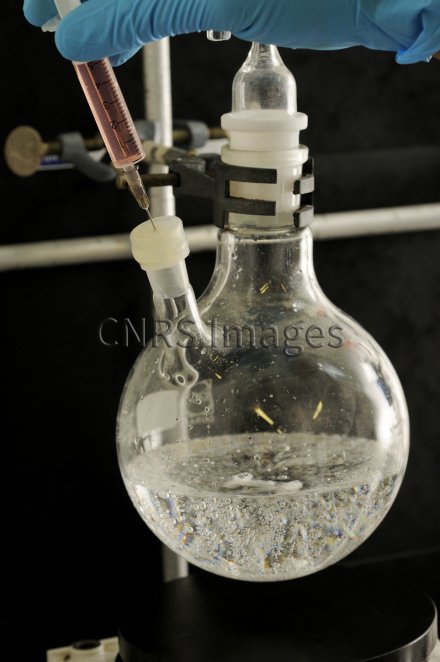Production year
2013

© Emmanuel PERRIN/CNRS Images
20130001_0282
Ballon contenant une solution aqueuse de borohydrure de sodium, un matériau à base de bore qui contient 10,8 %m d'hydrogène. Il génère spontanément de l'hydrogène par hydrolyse. Pour accélérer la cinétique d'hydrolyse, il faut ajouter un catalyseur. Le catalyseur est formé in situ à partir d'une solution aqueuse de sel métallique (ici un sel de cobalt). Cette solution de sel métallique va être injectée au moyen de la seringue de solution rose visible en haut à gauche. C'est une des façons de produire de l'hydrogène qui est étudiée ici.
The use of media visible on the CNRS Images Platform can be granted on request. Any reproduction or representation is forbidden without prior authorization from CNRS Images (except for resources under Creative Commons license).
No modification of an image may be made without the prior consent of CNRS Images.
No use of an image for advertising purposes or distribution to a third party may be made without the prior agreement of CNRS Images.
For more information, please consult our general conditions
2013
Our work is guided by the way scientists question the world around them and we translate their research into images to help people to understand the world better and to awaken their curiosity and wonderment.